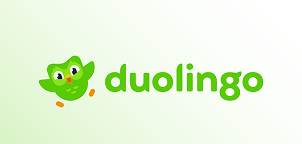Dynamic Programing
Learn dynamic programing from basics in this free online training. Dynamic programing course is taught hands-on by experts. Learn about knapsack problem in dynamic programing & lot more in this tutorial. Best For Beginners.

Ratings
Level
Learning hours

Learners
Skills you will learn
About this course
In this course, you will understand the concepts of Dynamic Programming. You will start this course by understanding what Dynamic Programming is and the different problems that come under Dynamic Programming. After that, You will move to the Knapsack problem concept and see how Longest Common Subsequence and Matrix Chain Multiplication Algorithm works. Finally, you will understand these concepts with an easy example as well.
Explore our Software Engineering Courses today.
Course Outline
This moudle gives you an introduction to the concept of dynamic programming.
This module gives you an understanding of various dynamic programming problems such as longest common subsequence, knapsack problem, matrix chain multiplication, travelling salesman problem and dijkstra.
This module will give you an understanding of the knapsack problem in dynamic programming.
This module gives you an in-depth understanding of Longest Common Subsequence(LCS) in dynamic programming.
This module discusses about Matric Chain Multiplication in dynamic programming.
 UPGRADE
UPGRADE
Recommended university programs
What our learners enjoyed the most
Skill & tools
62% of learners found all the desired skills & tools
Frequently Asked Questions
Will I receive a certificate upon completing this free course?
Is this course free?
Will I get a certificate after completing this Dynamic Programing free course?
Yes, you will get a certificate of completion for Dynamic Programing after completing all the modules and cracking the assessment. The assessment tests your knowledge of the subject and badges your skills.
How much does this Dynamic Programing course cost?
It is an entirely free course from Great Learning Academy. Anyone interested in learning the basics of Dynamic Programing can get started with this course.
Is there any limit on how many times I can take this free course?
Once you enroll in the Dynamic Programing course, you have lifetime access to it. So, you can log in anytime and learn it for free online.
Other IT & Software tutorials for you
Dynamic Programming
What is Dynamic Programming
In the dynamic programming or DP approach, the subproblems are broken down into smaller sub-problems. These sub-problems are solved, and results are remembered to solve the similar or overlapping sub-problems. These sub-problems are combined in order to get the best solution.
Richard Bellman developed the dynamic programming or DP method in the 1950s, and it is being used in numerous fields, from aerospace engineering to economics. The core concept of dynamic programming was to avoid repetitive tasks by remembering the partial output of the previous problem. These concept applications are widely used in real-life situations.
Approaches of Dynamic Programming
Dynamic programming uses two approaches :
-
Top-down Approach : This approach is based on the memorization technique. It solves sub-problems whenever required and can be easily debugged. Memorization technique is the combination of recursion and caching, where recursion is calling the function by itself and caching means storing the intermediate results. This process requires more memory in the call stack and sometimes stack overflow conditions may occur if the recursion is too deep.
-
Bottom-up Approach : This approach is based on the tabulation or table filling method. It solves the problem of stack overflow by avoiding the recursion and saving memory space. In this approach, we solve the sub-problems first and then move to a larger problem by using smaller sub-problems. The results are stored in form of the matrix.
Steps of Dynamic Programming
-
Break down larger problems into smaller sub-problems.
-
Find the optimal solutions for these sub-problems.
-
Stores the results of sub-problems. This process is known as memorization.
-
Reuse the same sub-problems so that similar sub-problems can be calculated more than once.
-
At last, calculate the result of the larger problem.
These are the basic steps used in dynamic programming. The dynamic programming is applicable if the problems have overlapping sub-problems and optimal substructures properties.
Famous Dynamic Programming algorithms are:
-
Unix diff : For comparing two files
-
Bellman-Ford : For finding shortest path routing in networks
-
TeX : The ancestor of LaTeX
-
WASP : Winning and Score Predictor
Characteristic of Dynamic Programming
-
Overlapping Sub-problems : It is used when the same sub-problem needs to be calculated again and again. Dynamic Programming is used to store the results of sub-problem and we don’t need to recompute them again and again. Dynamic Programming is not used when overlapping sub-problems are not there and results are not needed to store in the tables.
-
Optimal Substructure: A problem is said to be an optimal substructure if its all optimal solution can be calculated from its optimal solution of sub-problems.
Example of Dynamic Programming
The following problems can be solved using the dynamic programming approach :
-
Fibonacci number series
-
Project scheduling
-
Shortest path by Dijkstra
-
All pair shortest path by Floyd-Warshall
-
Knapsack problem
-
Tower of Hanoi
Advantages of Dynamic Programming
-
Dynamic Programming can easily solve problems in chemical engineering design, inventory, control theory, etc.
-
Need not calculate same problems again and again.
-
Suitable for multi-point, multi-stage or sequential decision processes.
-
It saves memory space by overwriting the updated values of sub-problems.
-
Well suited for discrete or continuous variables, linear or non-linear problems, and deterministic problems.
Disadvantages of Dynamic Programming
-
Difficult to develop code because DP has different methods to solve.
-
The recursive method takes lots of memory for storing.
-
Have slow execution speed.
-
The large problems are divided into sub-problems, and results are stored that consume lots of space.





















.jpg)



 (1).jpg)


.png)

.jpg)





.jpg)










